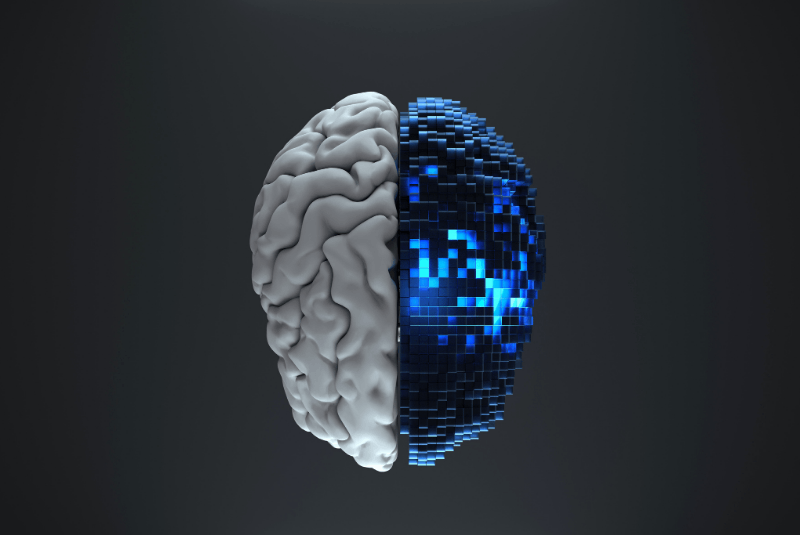With the augmentation in the present computing world, along with our understanding of the human brain, we are moving closer in making some spectacular science fiction into reality. And Brain-Machine Interface (BMI) is a giant step in that direction.
Brain-machine interface (BMI) technology is a sector in which committed, and big-name players are looking to expand a wide array of applications for setting up a direct communication pathway between an external device or the brain (wired or enhanced).
Some of these competitors are mainly interested in healthcare-centric achievements, such as enabling paralyzed humans to use a computer.
One such application of BMI, for illustration, is the development of a Human Brain/Cloud Interface which assists people to access information from the Internet directly, store their learning’s on the cloud, and work together with other linked brains, whether they are artificial or human. This is often termed the Internet of thoughts, a world where accessing information instantly is possible without relying on external machinery like Internet cables or desktop computers.
Moreover, retrieval and findings of data/information will be instigated by thought patterns alone.
Well, this blog has all that information shared which will give you a clear picture of how does this new BMI technology weaves the human capacities without any external tool or peripherals.
So precisely how does brain-machine interface technology functions?
Let’s flip over at where the technology is positioned today?
And how far off are we from perceiving it implied in the real world?
How BMI could be reinforced for optimal results in the future?
Primarily Brain-Machine Functioning
Brain-machine interface records brain waves and transmits them to the computer system to conduct the predetermined task. These transmitted waves govern objects or convey thoughts.
Secondly, BMI interface at present;
To some extent, brain-machine interface technology already exists today.
For example, there are hearing aids that have taken over the functioning role of the ears for people that are deaf and those who are hard of hearing.
These hearing aids connect to the nerves transmitting information to the brain, enabling people to interpret sounds they would otherwise struggle to process.
Various techniques permit paralyzed and mute people to communicate with others, although those methods are still rudimentary and slow.
Thirdly, And how far away we are from perceiving it applying in the real world?
The human brain is a spectacular computer! At a transmission speed racking up to ?6 × 10^16 bits per second, the human brain is potent to transmit an incredible amount of information in express speed.
Working from a different inclination are companies like Samsung, Intel, and IBM.
Intel is making an effort to mimic the functionality of a brain by using neuromorphic engineering.
Which clearly states that they are building machines that work in the same manner a biological brain works.
Still, the devices needed to convert data in BMI may ultimately dictate its operational speed and effectiveness.
Despite the brain’s incredible speed and complexity, being human entails potential flawed outcomes from the myriad connections and information relayed.
And thus it seems we are not much far from employing such augmented technology.
Fourthly How BMI could be implemented for optimal results in the future
What if you could put a computer to work at such a moment? Unless deleted, computers retain stored data or information, and it might even be recoverable after deletion.
Researchers are following several dimensions to conclude applications for connecting our brains to the digital world, and are also taking into consideration the strengths and weaknesses of each as they endeavor to attain a symbiotic relationship.
From AI-driven computers to brain-cloud connections for paralyzed individuals, BMI’s applications are virtually limitless in enhancing capabilities and connectivity.
Countless benefits emerge from ethically developing this technology, portraying BMI’s optimistic implementation as a resounding success.
Final Insights
Yet, the prime focus isn’t BMI production competence but the impactful applications warranting our attention.
Ultimately, the Internet of Thoughts will revolutionize human interaction and communication, remaining an enigmatic, transformative experiment.
How can we socialize when peers access our intimate thoughts, exposing abstract judgments? What if those without BMI compete against privileged peers? Will they merely get left behind? Or the major of all -When we unite our brain to a machine, are we even still human?
As this new technology gains attention, numerous questions warrant consideration. Multinationals strive for answers, promising success in addressing these challenges with determination and triumph.
In the meantime, stay emotionally strong and cognitively wise.

